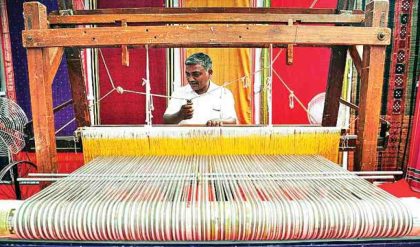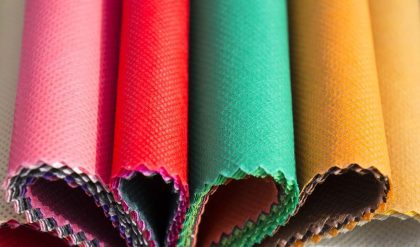1. Physical properties
a. Structure:
The cotton fibre is short (1/2 inch -2 long inch) and cylindrical or tubular as it grows. The cotton fibre is essentially cellulose consisting of carbon, hydrogen and oxygen. Bleached cotton is almost pure cellulose raw cotton contains about 5% of impurities.
b. Strength:
Cotton fibre is relatively strong which is due to the intricate structure and 70% crystalline.
c. Elasticity:
Cotton is relatively inelastic because of its crystalline polymer system and for this reason cotton textile wrinkle and crease readily.
d. Hygroscopic moisture:
Cotton does not hold moisture so well as wool or silk but absorbs it and so feels damp much more quickly. It also rapidly spreads throughout the material.
e. Electrical property:
The hygroscopic nature ordinarily prevents cotton textile materials from developing static electricity.
f. Absorbency:
As cotton has cellulose it is a good absorbent of fibre
2. Thermal properties
Cotton fibres have the ability to conduct heat energy, minimizing any destructive heat accumulation thus they can withstand hot ironing temperature.
Drap ability: Cotton does not have good body to drape well in shape. The type of construction of the fabric may improve this property. Resilience: Cotton wrinkles easily some wrinkle resistant finishes may reduce this property.
Cleanliness and wash ability: Though cotton absorbs dust due to its rough nature. It can be washed easily in the hot water and strong soaps without damaging the fibre.
Lustre: The natural cotton has no pronounced lustre. This can be improved by the mercerization finish of the cotton(that is sodium hydroxide treatment). Shrinkage: The fibre itself does not shrink but cotton fibre which has been stretched in the finishing process tends to relax back creating shrinkage.
3. Chemical properties
Action of acids and alkalies
Strong acids will destroy the fibres immediately. Dilute inorganic acids will weaken the fibre and if left dry will rot it. Therefore after treatment with acidic solutions cotton articles should be thoroughly rinsed in water. They are affected very little by organic acids. They are also quite resistant to alkalis even to strong caustic alkalies at high temperature and pressure. In 8% NaOH cotton fibres swells, spirals, twisted uncoil and shrinks and become thicker. The resultant fibre is smoother, lustrous, and stronger and has increased water and dye absorption.
Effect of bleaching: These have no effects until used in uncontrolled conditions and with heat. Effect of sunlight and weather: Ultraviolet rays of sunlight affect the strength of fibre and change the colour to yellow when exposed to prolonged period. Pollution also effect fibre.Concentrated and diluted mineral acids like sulphuric acids will discolour fibre .
Affinity to dyes: Cotton takes in dyes better than linen but not as readily as silk and wool. If a mordant is used cotton is easy enough to dye mordant colours, direct or substantive dyes should be applied to the cotton. Effect of perspiration: Both acidic and alkaline perspiration discolours the fibre.
4. Biological properties
Resistance to micro organisms: The mildew and bacteria damages cotton. Resistance to insects: Moths and beetles will not affect or damage the cotton. But the sliver fish eats the cotton cellulose



